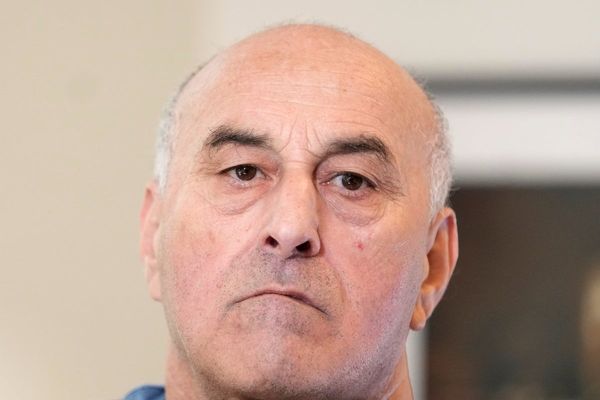
In the blink of an eye, a united Ireland has transformed from a largely unsayable demand into what feels like a new political reality. This turn in the tide has allowed the Sinn Féin president, Mary Lou McDonald, to recently claim a referendum will happen by 2030. Galvanised by the return of power-sharing to Stormont and the historic resonance of a nationalist becoming the first minister, her party is talking in typically brash style about a united Ireland being “within touching distance”.
But it’s no longer just Sinn Féin arguing that Ireland is “on the path to unification” – those are the words of the taoiseach, Leo Varadkar, a conservative politician by nature who once nurtured a hobby for anti-republicanism.
Since the Brexit referendum ate away at the untouchability of the border, a shift in political mood has been building. Majorities on both sides of the border are now in favour of holding a border poll, while 64% in the south and 30% in the north were found to be in favour of reunification as of late last year.
Yet amid this sense of momentum, there has been remarkably little discussion of what a united Ireland might or should look like – even as the sleekly strategic electoral machine of Sinn Féin primes itself for government in the south and north for the first time.
Although a 32-county democratic socialist republic is written into Sinn Féin’s constitution, the party has a tendency to blame the problems of capitalism not on capitalism, but on mismanagement by the establishment parties. Little wonder, then, that its blurry vision of reunification is effectively an absorption of the north into the south, sprinkled with cosmetic changes. Beyond an Irish national health service to end the existing two-tier health system in the south, all that is imagined are slight improvements to public services, harmonisation across a range of economic, bureaucratic, political and infrastructural areas, and a superficial remodelling of the Irish state.
Ireland would be better off reuniting for economic reasons, goes one of the party’s main arguments, but this usually refers to economic growth; a citizens’ assembly would deduce what Irish people want a united Ireland to look and feel like. In the meantime, all we receive are bromides about the ways in which reunification is common sense.
In the absence of meaningful conversation about what kind of radical departure this new Ireland could be, we have instead an important yet circuitous debate over symbols and symbolism, flags and anthems. “Can the Red Hand of Ulster be transformed into a unifying image for the island of Ireland?” the Irish Times asked last month, as part of a series on the cultural dimensions of the debate.
Amid the vagueness of Sinn Féin’s plans, the so-far timorous Irish left should step in to map out a bold vision for a new political and economic settlement for the island – one that aims at shifting power to ordinary workers. Drastic constitutional change will flourish best in tandem with kindred social programmes, which will drag Ireland from being the lowest spender on public services in the EU to a country that ends privatisation, invests in public infrastructure and reduces a fatal reliance on low-tax loopholes for multinationals.
The transfer of power could be used to plan for decarbonisation, to remove class discriminations in health and education, and to breathe new life into Irish democracy by reducing a crippling reliance on citizens’ assemblies. It could revitalise the labour movement, one of the only social organisations that operates on an all-Ireland basis (the Irish Congress of Trade Unions covers the south and the north).
So far, Sinn Féin has failed to envision a united Ireland that would present a serious, structural challenge to social inequality and the concentration of wealth and power. It works from the assumption that the southern economic order should be left untouched, and that it should simply be expanded northwards.
This is despite the fact that the richest 1% of people in the south hold 35.4% of Irish financial wealth, a recent report by Oxfam discovered. This type of reunification would also involve the expansion of an unapologetic “tax haven”, according to the EU Tax Observatory. Is this the type of state that Irish people want to live in and to project to the world?
An alternative vision of a united Ireland is urgently needed from the socialist left and Sinn Féin’s centre-left companions. As a mantra, “partition is bad for business” does not give people hope. Failing to create this vision will squander a once-in-a-century chance to design and build a radical – and radically different – new state.
Unless the Irish left begins to set out its own stall (or a new pro-unity social movement emerges from below to force it), Ireland may sleepwalk into becoming a country with all the shiny trappings of a nation-state born in the 21st century, but all the hollowness and inequalities of centuries past.
Colin Gannon is an Irish journalist based in London







